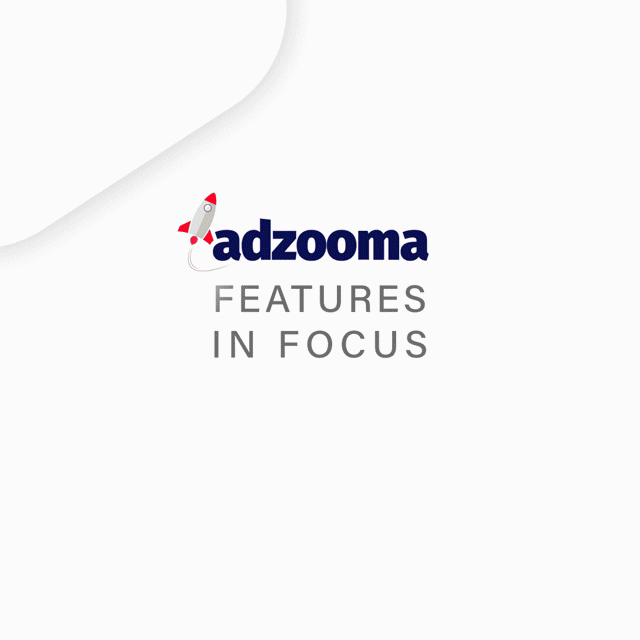Over the last couple of years, Google and Microsoft have introduced new types of ads which improve performance with the power of machine learning. Creating good ad copy, then testing and analysing the different ad copy variations can be difficult and time-consuming. In addition, analysing and showing the right ad copy in real-time at every single auction is impossible.
Here is where new ad formats from Google and Microsoft can help. Through Search and Display campaigns, you can include ad formats which can continually optimise and adjust their ad copy depending on the context.
Responsive Search Ads
Responsive Search Ads (RSA) were in beta for both Google and Microsoft until recently but are becoming more and more mainstream after significant improvements in performance seen by early adopters. Essentially, RSAs group headlines and descriptions to create an optimum combination for every search queries. Advertisers can provide up to 15 headlines and 4 descriptions. Then all the possible combinations are tested with the power of machine learning to discover the best performing combinations.
How to set up steller performing RSAs?
The first rule of RSAs is to treat them as a different ad type from the existing Extended Text Ads (ETAs). ETAs are limited to 2 headlines and 1 description which urges an advertiser to fully use the character limit of every asset.
With RSA there is a possibility to include up to fifteen headlines. Therefore advertisers can “afford” not to maximize the character count of every single headline. For example, you can take a whole headline only for the name of your brand.
Make sure the headlines in RSA are unique and work well together in different combinations.
For more information, read our guide on Responsive Search Ads.
Measure results like a pro

RSA performance should be measured on clicks and conversions, not on click-through rate. Moreover, if you run RSAs, they will not take traffic from your existing ETAs, but optimise for getting incremental impressions, clicks and conversions. Sometimes RSAs might have lower click-through rates (CTRs), but this is nothing to worry about. The performance metric to focus on is incremental traffic.
RSAs come with two performance reports in the Google Ads interface. The reports help advertisers understand how the different headlines perform on their own and the most shown combinations. The asset report shows the number of impressions of different headlines. A best practice is to gradually replace headlines with the lowest impressions. The other report shows the ad combinations shown to users and which combinations had the most impressions.
Measuring & Optimising Performance in One Place
It’s important to utilise both networks where you can. Though Google holds the dominant power in the search arena, the Microsoft Audience Network still has 13.7 billion PC searches a month and reaches 63 million users that Google doesn’t. Plus Microsoft’s users are both more educated and affluent with a third of Microsoft users in the US having a household income over $100k.
Microsoft ads are also much cheaper to run in comparison to Google while the audience is more than enough for your ads to be effective, as we’ve discovered in our research. One of the pain points however is having to jump between both networks to make changes to your ads.
But that doesn’t have to be the case anymore. With free tools like Adzooma, it’s now possible to manage your full campaigns, including responsive search ads, for both Microsoft and Google in one platform, so you never have to jump between the networks again. You can add new creatives or entire campaigns, adjust budgets, and apply changes from a single screen.
You can read more about how Adzooma Management can help or sign up for free today.

Responsive Display Ads
Display advertising can be a challenge for small businesses because of the cost of making good quality creative. Every creative had to be reproduced in different sizes to fit the available inventory. Not having the right size of every banner limits the reach of a campaign. On top of that, you had to design a separate creative for different channels such as YouTube and Gmail.
Responsive Display Ads, unique to Google, come as an opportunity for advertisers who want to save time and reach more inventory. The advertiser provides the assets: Business name, long headline, logo, up to five short descriptions and headlines and up to five images. Machine learning-powered technology combines the assets together into ads which can show across the Google Display Network, including YouTube and Gmail.
One of the biggest benefits of building Responsive Display Ads is the ease of the setup. By entering the domain, Google and Microsoft ads can scan the website and extract the logo and images. Advertisers also have access to a free repository of good quality stock images for their ads.
When building RDA advertisers, see a similar ad strength score like the one for RSAs. The score measures the quantity and diversity of assets. My recommendation is not to publish ads with poor ad strength and less than two images. The more high-quality assets you provide, the better the chances of sticking a high-performing combination.
Similar to RSA asset performance reports, advertisers can see performance ratings for each asset. Advertisers can gradually replace low performing assets and double down on high-quality ones. A combination report also shows the top ad variations.
The secret to a great Responsive Display Ad is a superb image
The most important asset of a successful RDA is the image. Make sure you use an image different from the standard image ads in your display campaign. The best performing assets are clear, high-resolution photographs in a natural physical setting. Text, logo and call to action overlays are obsolete, as you add these as separate assets when building the ad. A strong visual focus which connects with the message you want to conduct is key for the success of the creative.
When it comes to the text assets try to use short and unique headlines and avoid anything too generic or salesy. Since you have a separate logo asset, there is no need to repeat the brand name in a headline. The long headline must demonstrate a unique value proposition.
This asset might be shown without description text or can run as an individual text ad. Start the descriptions with the most important information like promotions and CTAs, because sometimes these assets might be shortened on smaller screens.
Lastly, when adding your business name, stick to a conversational brand name – no Ltd. or LLC as this looks too formal.
You can choose how to structure your display ad groups – using a few RDAs per ad group, or combining RDAs with standard image ads. In any case, I would recommend adding at least one RDA per ad group.
Summary
RDAs and RSAs are a big time-saver when it comes to testing and implementing new ad copy at scale. They work great together with standard image ads and expanded text ads to unlock incremental clicks conversions, making your ads eligible to compete in new search auctions and show on more display inventory. Advertisers can ensure good brand representation by bringing in high-quality, unique and helpful text and image assets.



